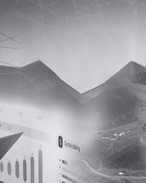EXPLORER OF THE YEAR
MNN Awards: Jindalee's McDermitt in pole position for energy revolution
Decision to change unconventional lithium targets has paid big dividends for shareholders
The 1.43 billion tonnes grading 1320 parts per million McDermitt deposit in Oregon now contains an estimated 10.1Mt of lithium carbon equivalent, making it the largest known lithium deposit in the US, and its growth is likely set to continue.
McDermitt remains open with a further exploration target set between 1.3-2.3Bt at 1100-1500ppm lithium.
Jindalee's founder and major shareholder, executive director Lindsay Dudfield, told MNN he was "chuffed" by a nomination in the MNN 2021 Awards for Explorer of the Year.
He said the company had initially targeted North American unconventional sources of lithium because they offered scale, even though there has yet to be any commercial-scale production in a sector dominated by hard rock and brine sources.
"There were three advanced sediment-hosted projects - Thacker Pass and Rhyolite Ridge in the US, and Sonora in Mexico," Dudfield said.
"All had feasibility studies done, with the published data suggesting the operating costs for the style of deposit are very competitive, in the lowest quartile.
"We were encouraged, so we looked around the US for areas that were open and could host those.
"The US only produces about 1% of the world's lithium production, and we could see that if the US wanted to electrify everything, they would need a lot of lithium, and Americans prefer to buy US products first."
He praised Jindalee's former managing director Pip Darvall, who did a lot of the early legwork to identify almost a dozen targets.
"We visited most on the list, and sampled about half, and we started pegging claims at McDermitt in Oregon and Clayton North in Nevada," he said.
McDermitt stood out in terms of mineralisation and potential scale, and Dudfield said the explorer couldn't believe the ground was open.
"We wondered if there was a proposed national park in the area that we, as a naïve little Aussie didn't know about, but all our claims were granted," he said.
Its next challenge was securing a drilling contractor for a four-hole proof of concept diamond program.
That kicked off a series of issues, and ultimately the first four proof-of-concept diamond holes had to abandoned at an average depth of 90m, before hitting the basalt basement.
The work confirmed the mineralisation was thick, and started from surface.
Several modest drilling programs since have delivered the large resource, and helped reduce the cut-off grade from an initial, conservative 1750 parts per million to 1000ppm lithium.
Dudfield said CEO Karen Wellman had designed the upcoming 45-hole program, Jindalee's largest yet, with the hope of defining its full extent of McDermitt, with a mix of RC and diamond drilling to infill and extend the known resource, including to the west, which could deliver an even larger resource.
The first holes will also be punched into Clayton North.
"It will be good to know size of the fish we have caught," Dudfield said.
A scoping study is being finalised, and Dudfield is cautiously optimistic, given the upwards trajectory of Jindalee over the past three years.
"We've been able to bust a few myths so far," he said.
"There was a perception you can't do mineral exploration in Oregon. That's not true, and we are still picking up ground. I'm amazed we have been able to do that. You couldn't do that in Western Australia.
"We've had all our drilling programs approved, so that is another myth busted.
"The other myth is that if you could explore, you couldn't get the lithium out of the hectorite, but we've been continuing metallurgical work, and we have seen high recoveries.
"We were able to demonstrate a 60% upgrade in head grade, and we can reject about half the material via a very simple beneficiation process, attrition scrubbing, which is used in the mineral sands sector, except where they reject the slimes that's what we want."
He also pointed to Chinese giant Ganfeng Lithium's increasing focus on both the Thacker Pass and Sonora projects, which should give the market the confidence in the potential of lithium clays, beyond Jindalee's promising metallurgical test work.
The rejection of waste should help remove a lot of the acid-consuming material, which should help reduce costs for the conventional acid leaching process that's being considered, however Jindalee is also studying a roasting process similar to that being considered at Sonora.
Lithium clays have the potential to be as cost effective as brine production, with higher grades and a more rapid timescale.
Shares in Jindalee have rallied since mid-2020 with the recovery in the lithium price, and have traded between A31c and $3.45 over the past 12 months, with the stock recently traded at $2.50, capitalising the company at $133 million.
* Jindalee's McDermitt lithium discovery in the US makes it a nominee for Explorer of the Year in the 2021 MNN Awards.

Mining Journal Intelligence Global Leadership Report 2024: Net Zero
Gain insights into decarbonisation trends and strategies from interviews with 20+ top mining executives and experts plus an industrywide survey.

Mining Journal Intelligence Project Pipeline Handbook 2024
View our 50 top mining projects, handpicked using a unique, objective selection process from a database of 450+ global assets.

MiningNews.net Research Report 2024
Access a multi-pronged tool to identify critical risks and opportunities in Australia’s mining industry.

Mining Journal Intelligence Investor Sentiment Report 2024
Survey revealing the plans, priorities, and preferences of 120+ mining investors and their expectations for the sector in 2024.





















